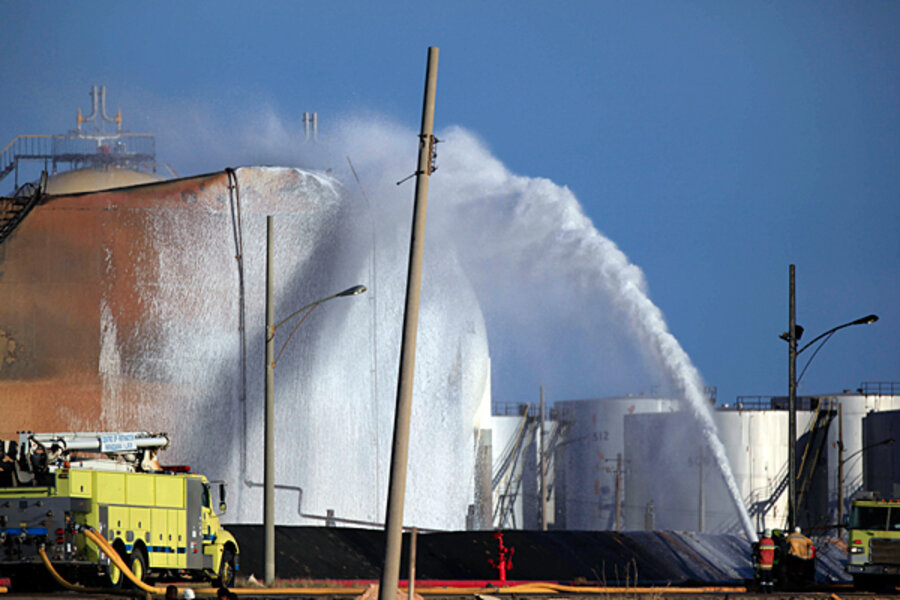Venezuela's refinery explosion: one for the history books
Loading...
• A version of this post ran on the author's blog, Caracas Chronicles. The views expressed are the author's own.
A few days ago, I was privileged to attend a screening of El Reventón I and II, two documentaries by Venezuelan filmmaker Carlos Oteyza.
Using archival footage from Bolívar Films, and working off a script that reads like a great history book, Mr. Oteyza sets out to chart the history of oil in our country focusing on two pivotal moments, or “reventones.”
The first is the explosion at Los Barrosos No. 2, an oil well close to Cabimas that littered the ground with 100,000 barrels per day for nine straight days. Even though Los Barrosos was eventually capped (thanks, in part, to the miraculous intervention of San Benito, according to the film) it served as a clarion call to those seeking to tap Venezuela’s enormous potential.
The second “reventón,” the one with which he ends the second film, is the nationalization of the oil industry. A watershed moment in contemporary Venezuelan history and a landmark in the history of sideburns, the nationalization was the starting point for the current relationship between citizens, government, politicians, and oil.
While I was watching enthralled, I kept thinking we need another sequel, Reventón III. Because the next turning point for the industry was undoubtedly the oil strike of 2002, and the subsequent firing of 20,000 of the industry’s best minds. It was at that precise moment when Hugo Chávez finally took control of the country, and he’s kept it in his iron grip ever since.
But then, this weekend, El Reventón IV happened.
Regardless what hypothesis you may propose as probable cause for the accident at Amuay, there is no denying that “events” at oil refineries should not result in dozens of people killed and millions of dollars in losses … unless, of course, somebody, somewhere did not do their job.
Even the hare-brained hypothesis of “sabotage” would require gross negligence on the part of an oil company that is supposed to safeguard the industry from such happenings and have protocols in place to minimize the damage.
It was at this point, August 25th, 2012, when years of using the industry as a cash cow finally caught up with us.
RELATED: Brazil, Venezuela, and Mexico: three ways to nationalize oil
Instead of a competent industry where damage is minimized, we have a burning inferno. Instead of management seriously pondering the probable causes and taking responsibility, we have political hacks quick to lay the blame somewhere else instead of where it lies. It is quite possible that because as a society we have chosen Mercal, Petrocasas, and cheap gasoline over the safety of our refineries, dozens of Venezuelans are dead.
It, too, marks a before and after in the history of Venezuela’s oil industry.
– Juan Nagel is a writer for Caracas Chronicles, the place for opposition-leaning-but-not-insane analysis of the Venezuelan political scene since 2002.







